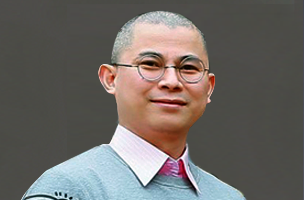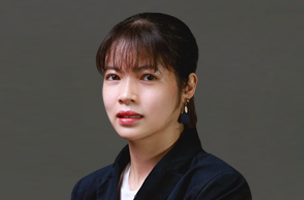Technology Transfer in LAOS
Bud & Prairie is fully able to advise and assist our clients with technology transfer related matters.
1. Legal and Regulatory Framework
1.1 Key Legislation
- Law on Intellectual Property (2017): Provides a framework for protecting intellectual property rights in Laos, which is crucial for technology transfer. It includes provisions on patents, trademarks, copyrights, and industrial designs.
- Law on Investment (2014): Regulates foreign investment, including technology transfer agreements, and offers incentives for foreign investors.
1.2 Technology Transfer Agreements
- Types of Agreements: Common forms of technology transfer agreements include licensing agreements, joint ventures, research collaborations, and franchising agreements. These agreements outline the terms for transferring technology and knowledge.
2. Technology Transfer Process
2.1 Identification of Technology
- Assessment: Identify the technology or expertise to be transferred, including its potential benefits and applications in the local context.
- Partnerships: Establish partnerships with technology providers, research institutions, or foreign companies that hold the technology.
2.2 Negotiation and Agreement
- Terms and Conditions: Negotiate the terms of the technology transfer agreement, including the scope of technology, financial arrangements, intellectual property rights, and confidentiality provisions.
- Legal Framework: Ensure that the agreement complies with Lao laws and regulations, including intellectual property laws and investment regulations.
2.3 Implementation
- Training and Support: Provide training and support to local entities to facilitate the effective adoption and utilization of the technology.
- Monitoring: Monitor the implementation process to ensure that the technology is used correctly and effectively.
3. Intellectual Property Considerations
3.1 Patents and Licenses
- Patent Protection: Ensure that any technology being transferred is protected by patents or other intellectual property rights in Laos. This may involve registering patents with the Department of Intellectual Property (DIP).
- Licensing: Technology transfer agreements often include licensing arrangements, which should be clearly defined in terms of scope, duration, and financial terms.
3.2 Confidentiality and Trade Secrets
- Confidentiality Agreements: Include confidentiality clauses in agreements to protect trade secrets and proprietary information during the transfer process.
4. Support and Incentives
4.1 Government Support
- Investment Incentives: The Lao government may offer incentives for technology transfer through the Law on Investment, including tax breaks, subsidies, or other financial benefits.
- Technical Assistance: Government agencies or development organizations may provide technical assistance and support for technology transfer initiatives.
4.2 Development Programs
- Capacity Building: Participate in capacity-building programs or development projects that focus on enhancing local technical skills and infrastructure.
5. Challenges and Opportunities
5.1 Challenges
- Regulatory Environment: Navigating the regulatory environment can be complex, with potential challenges related to intellectual property protection and investment regulations.
- Local Expertise: Limited local expertise and infrastructure may hinder the effective adoption and utilization of transferred technology.
5.2 Opportunities
- Economic Growth: Technology transfer can drive economic growth and innovation in Laos, contributing to the development of local industries and capabilities.
- Collaboration: Opportunities for collaboration with international organizations, research institutions, and foreign companies can enhance technology transfer efforts.
6. Best Practices for Technology Transfer
6.1 Due Diligence
- Assess Needs: Conduct a thorough assessment of local needs and capabilities to ensure that the technology being transferred aligns with local requirements and conditions.
- Legal and Financial Advice: Seek legal and financial advice to ensure that technology transfer agreements are compliant with Lao laws and are structured to protect interests.
6.2 Capacity Building
- Training Programs: Develop and implement training programs to build local capacity and ensure effective utilization of the transferred technology.
- Support Structures: Establish support structures to assist local entities in adapting to and implementing new technologies.
6.3 Monitoring and Evaluation
- Regular Monitoring: Monitor the progress and impact of technology transfer initiatives to address any issues and ensure successful outcomes.
- Evaluation: Conduct evaluations to assess the effectiveness of technology transfer and identify areas for improvement.
Technology transfer in Laos is an important mechanism for promoting innovation and economic development. While there are challenges related to regulatory compliance and local expertise, there are also significant opportunities for enhancing local capabilities and driving growth. By understanding the legal framework, negotiating effective agreements, and implementing best practices, businesses and organizations can successfully navigate the technology transfer process and contribute to the development of Laos’s technological and industrial landscape.
For further information, please do not hesitate to contact us at bud-prairie@bud-prairie.com.
1. Patentability Search
Patentability search is also known as a novelty search, which helps identify whether or not an idea is novel and involves an inventive step (nonobvious). The most complete searches include all types of prior art to give an inventor or organization a comprehensive look at the technology landscape. A patentability search should be completed during the ideation phase, as well as prior to disclosure.
A patentability search is conducted by examining published patents that relate to your own invention to figure out whether your idea has already been patented. You can also see similar inventions, allowing you to improve and refine your own invention without infringing on someone else’s patent. And you can do all this before you have spent many hours and thousands of dollars on an idea that you can’t patent.
2. Freedom to Operate Search
A freedom to operate search (often abbreviated as FTO) determines how similar your product is to existing patents, and therefore how likely you are to infringe on a patent by making and marketing your invention. You may also see this type of search called a patent infringement search or right-to-use search.
Completing an FTO search early in the innovation cycle helps R&D teams design around existing patents. Later on, the results of the search can identify whether you may need to license other patents to bring your product to market.
3. State of the Art Search
Completing a state of the art search (also known as a product clearance or patent landscape search) allows you to examine the literature related to a specific industry, rather than around a certain technology, which may be applicable across industries. Using a state of the art search helps businesses find competitors and existing products within their field. These insights allow researchers, engineers, and leaders to make strategic decisions at any point within the innovation cycle.
4. Invalidity Search
To assess the strength of a specific patent, companies will use an invalidity search. This is also called a validity search. The results of this search determine whether or not the patent holder can claim infringement. They can also be used to decide licensing fees or value. If an invalidity search finds evidence in the form of existing, yet undiscovered, prior art, the patent should not have been granted and is unenforceable. This type of patent search is completed after a patent is granted.
5. Evidence of Use Search
Some organizations actively seek out products that infringe on their patent rights. This type of search is called an evidence of use search. To find these products, an organization or inventor will review similar patents and look for evidence the patent is utilized in a way that infringes on the searcher’s rights. Evidence of use searches happen after a patent is granted and as it matures.
6. Search Database
There are several databases in which patent searching may be done. Many databases such as USPTO, Google Patents, Free Patents Online, esp@cenet etc. are freely available, while other databases such as ThomsonInnovation, Orbit, Patbase etc. are available on the basis of a subscription. Each of these databases varies in terms of at least one of the following: Data Coverage, Search Engine, Interface.
• Google Patent Search Database. The Google search engine has revolutionized how people use the Internet. …;
• Patentscope. Patentscope is a free database put out by the World Intellectual Property Organization (WIPO)…;
• The USPTO Database…;
• Espace European Database…
The following are some of the largest and most popular patent office databases.
• Canadian Patents Database (CIPO)…;
• DEPATISnet (DPMA)…;
• Espacenet (EPO)…;
• JP-PlatPat (JPO)…;
• PatentScope (WIPO)…;
• U.S. Patent Assignment Database (USPTO)…;
• U.S. Patent Center (USPTO)…;
• U.S. Patent Databases (USPTO).
However, an inventor or applicant can also conduct their own patent search. The inventor or applicant has the advantage of often being more familiar with the art to which the invention relates, including having an understanding of the common knowledge held by persons skilled in the art and the relevant terminology.
Patent drafting is a part of how to patent an idea and is the process of writing the patent description and claims. It is at the core of every patent application. When the patent is issued or allowed, the draft serves as the specification part of the document. The patent applicants have to be more aware that depending on how well the complete specification is drafted and how precisely and correctly the claims describe the invention or the imaginary ‘boundary” is set, the easier it will be to defend it against third parties.
Normally, a patent specification covers the following parts:
• Field of Invention: It generally discloses a field to which the invention generally relates.
• Background: It discloses existing devices or methods related to the field of invention, broadly known as prior art. Background generally discloses prior art and limitations or disadvantages associated with the prior art.
• Summary of Invention: It (i) discloses the objectives of the invention, (ii) generally lists distinguishing features and advantages of the invention for which protection is being sought, (iii) summarizes the main features of the invention to be claimed, and (iv) also includes a broader explanation of the invention and briefly mentions the solution provided by the invention.
• Brief Description of Drawings (if any): If the invention includes any drawings, then this section includes a description of the drawing briefly such that a reader can get an overview of what could be disclosed by the drawing. The drawings are to be prepared in separate sheets as per different guidelines of different jurisdictions. The drawing sheets are filed with the patent specification.
• Detailed Description of Invention: It explains the different features of the invention in detail. Detailed description should be written such that a skilled person in the art can understand the invention solely after referring to this description. All claimed features and their interconnections, if any, need to be explained. In other words, all the claimed features need to be well supported in the detailed description.
• Claim(s): Claims are the most important part of a patent draft. Claims decide the scope of the protection which would be awarded to the inventor when the patent is granted. Claims are broadly divided into two categories, independent claim, and dependent claim. Every patent draft or patent application must contain at least one independent claim. Claims tend to change in course of the examination (narrower in most cases than the originally filed claims.
• Abstract: It is a technical summary of the invention. Generally, the Abstract should disclose the invention sufficiently to enable a person to perform a search for anticipation. The publication of a patent application includes publication of the abstract and representative drawing, if any.
• Drawings: Not all specifications have drawings. Such drawings, if any, would be prepared and submitted to the Patent Office in separate sheets. Different jurisdictions have different rules for allowable drawing sheets.
The significance of patent drafting and its impact on the patent protection should be conveyed to the SMEs, start-ups and inventors along with the information on importance of the patent protection in general. They should be informed that in case of any opposition or challenging the validity of their patent by a third party, a poorly drafted patent will be easily invalidated.
A patent is a right granted to an individual or enterprise by the government which excludes others from making, using, selling, or importing the patented product or process without prior approval. Patent filing or patent registration is the first step an inventor takes to protect his/her invention from being misused.
Under Vietnam legislation, there exists three kinds of patents, i.e. Invention Patent, Utility Solution Patent and Design Patent. Patents may be granted to anyone who invents or discovers any new and useful process, machine, article of manufacture, or compositions of matters, or any new useful improvement thereof. Patent filing is essential for establishing definitive, enforceable IP rights for your inventions, covering all relevant jurisdictions. A patent registers your invention and lets you take legal action against anyone who makes, uses, sells or imports your invention without your permission.
You should be aware of the examination process conducted by the Intellectual Property Office of Vietnam (IP Vietnam). This process begins with the filing of a patent application with IP Vietnam and completed by granting a patent (if the invention meets the protection criteria) or rejection/refusal (if the invention does not the protection criteria).
We can help you with such a patent prosecution by drafting a patent specification or translating such specification into local language, filing, and negotiating with IP Vietnam’s examiners regarding the patentability of the invention in order to obtain patent protection and rights for an invention.
An opposition proceeding is an administrative process available under the patent law of many jurisdictions which allows third parties to formally challenge the validity of a pending patent application (pre-grant opposition), of a granted patent (post-grant opposition).
Once the patent application is published, an opposition may be filed within a certain time period prescribed under the applicable law. The opponent shall state the grounds for opposition and submit any evidence. If no opposition is filed during that period, the substantive examination will be carried out.
In the meantime, an applicant for a patent, any of whose claims has been twice rejected, may appeal from the decision of examiners to IP Vietnam, having once paid the fee for such appeal.
LET'S GET STARTED
Please fill in and submit the form for our assistance.




